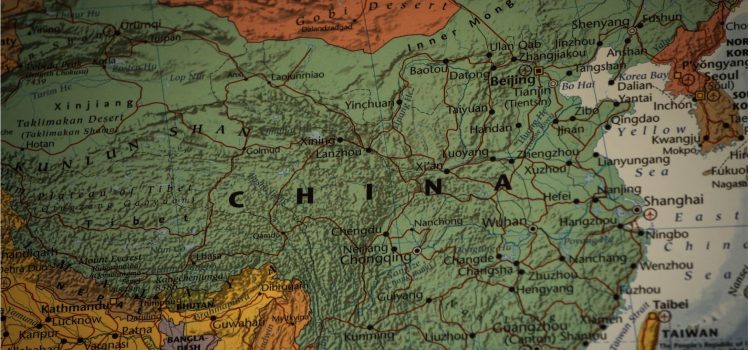
When did the semiconductor industry in China take off? How has the industry developed over time?
The semiconductor industry in China started with a heavy emphasis on production, and it grew to include design and engineering as well. Understanding the underpinnings of the Chinese semiconductor industry grants insight into the position of China in the international economy.
Learn what makes China’s semiconductor industry successful and how it has grown over time.
The Development of China’s Semiconductor Industry
In this article, we’ll discuss the increasingly prominent semiconductor industry in China. Specifically, we’ll look at China’s early attempts to establish an onshore chip industry; the recognition by Chinese leadership of the importance of semiconductors for the nation’s economic, military, and national security future; and the geopolitical concerns and challenges that China’s emergence as a major player in the chip industry has for the US and its allies.
China’s Semiconductor Ambitions
In the late 20th and early 21st centuries China embarked on a significant journey to emerge as a global player in the semiconductor industry.
The Chinese government had a vision of making mainland China a global semiconductor powerhouse. They believed China’s low labor and manufacturing costs could lure semiconductor investment to the country, play a key role in the nation’s recovery from the radicalism and chaos of the Maoist era, and be the stepping stone for China to finally play a central role on the global stage.
| The Chinese Economic Reforms To more fully understand China’s push to develop a domestic semiconductor industry, it’s worth exploring the historical context in which it’s taken place. China initiated a series of economic reforms in the late 20th century, notably under the leadership of Deng Xiaoping. These reforms began in the late 1970s and continued through the 1980s. In 1980, China designated Shenzhen as its first Special Economic Zone. These zones were created to attract foreign investment by offering favorable policies and fewer restrictions to foreign companies. At the same time, China embarked on a path of trade liberalization, reducing trade barriers and making it more enticing for foreign companies to invest. The country also made substantial investments in education and workforce development throughout the late 20th century, aiming to cultivate a skilled labor force. These efforts continued through the 1990s and beyond. As a result of these reforms and the influx of foreign investment, China experienced rapid economic growth, becoming one of the world’s largest economies. This growth trajectory began in the late 20th century and continued into the 21st century. |
China’s Early Challenges
However, China’s early ventures faced formidable challenges. Although Chinese cities like Zhengzhou and Dongguan emerged as hubs for chip and smartphone assembly, they were concentrated on the lower end of the value chain—providing largely unskilled labor to assemble iPhones and other devices for foreign companies like Taiwanese giants Foxconn and Wistron.
Despite the success of gaining a foothold in the low-value end of the chip value chain, China’s semiconductor market share still trailed that of geopolitical rivals such as the US, South Korea, Japan, and, most significantly, Taiwan.
| The Opportunities and Challenges of China’s Unskilled Labor Pool The main resource China could contribute to the global economy at this time was its vast pool of unskilled labor—indeed, this once provided a significant advantage for China’s manufacturing industries, allowing China to become the “world’s factory” by offering low-cost labor for various production processes. As China’s economy evolved and technology advanced, there was a shift toward a more skilled and educated workforce. The country invested heavily in education and vocational training to develop a workforce capable of handling advanced manufacturing and technology-related jobs. However, many industries that relied on low-skilled labor faced rising labor costs as workers demanded higher wages and better working conditions. The shift away from unskilled labor impacted industries like textiles, apparel, and simple assembly, which had traditionally thrived on low-wage workers. Some of these industries began relocating to countries with lower labor costs. |
The Push for Geopolitical Dominance
Chinese leadership—notably General Secretary of the Chinese Communist Party Xi Jinping—recognized that China’s economic, military, and national security future depended on developing a homegrown, high-value semiconductor industry. They needed to move beyond assembling devices for global tech giants like Apple and Samsung and begin leading in chip design and manufacture. Beyond the economic benefits, there were also national security and geopolitical strategic concerns behind building a domestic chip industry—key technologies underpinning China’s massive surveillance state heavily relied on inputs of foreign-made chips. If those supplies were suddenly cut off, China would be at risk.
In the 2010s, China began pouring tens of billions into its information technology sector, pushing both private investors and state-owned enterprises to invest and shift the center of technological innovation eastward.
(Shortform note: China’s efforts have faced resistance from various quarters, including the United States and its allies. The United States has imposed sanctions on Chinese semiconductor companies and restricted their access to advanced technology, particularly American-made equipment and software. These sanctions aim to curb China’s rapid advancement in semiconductor manufacturing. In addition, the US is working to strengthen alliances with like-minded countries to collectively counter China’s semiconductor ambitions. This includes efforts to coordinate export controls and technology restrictions.)
These developments showcase the complex interplay of economics, technology, and geopolitics in the semiconductor industry. Computing power, the ability to produce chips and complex systems, and the capacity to transmit data faster and more accurately are the modern keys to geopolitical influence and military prowess.

———End of Preview———
Like what you just read? Read the rest of the world's best book summary and analysis of Chris Miller's "Chip War" at Shortform.
Here's what you'll find in our full Chip War summary:
- The history and rise of the semiconductor industry in the US and abroad
- How national security became intertwined in the chip industry
- How a spurned TI employee grew the chip industry in Taiwan






